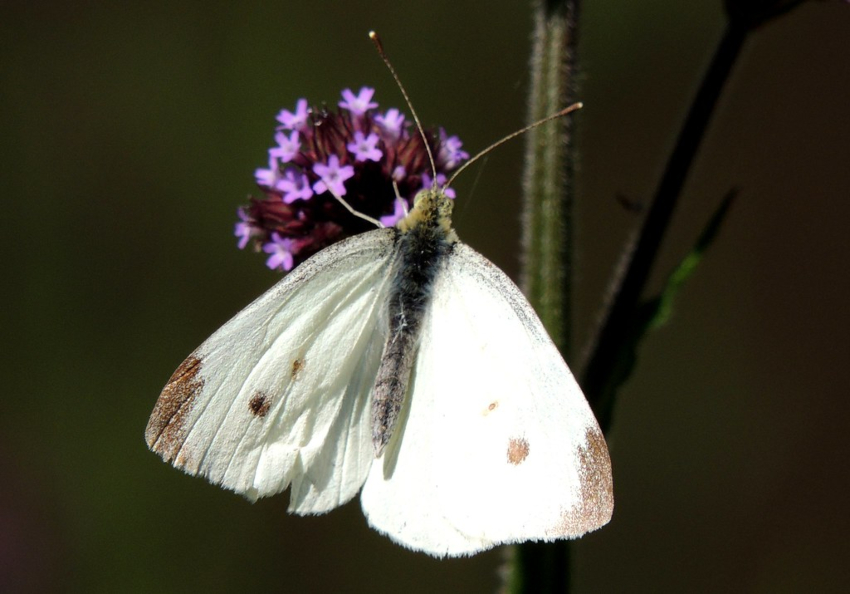There are over 20,000 different butterflies across the world, with approximately 750 of those in the United States. One of those that you may come across is the cabbage white butterfly. Keep reading to learn some cabbage white butterfly facts—including some facts that may seem obvious (like its color), and some that may surprise you (like where it comes from).

What kind of butterfly is the cabbage white butterfly?
The scientific name of the cabbage white butterfly is Pieris rapae. It belongs to the Pieridae family.
What does the cabbage white butterfly look like?
As you may have guessed based on the name, the Cabbage white butterfly is a white color. The Pieridae family is commonly called the whites and sulfurs because the species in the family are white and yellow, commonly referred to as sulfur, in color. Its wings are almost completely white, but it does have one helpful distinguishing trait: small black dots on its wings, usually only two black spots in the center of the forewings. The underside of cabbage white butterfly wings may be more of a yellow or gray-green color.
On the other hand, the larvae of the cabbage white butterfly, sometimes referred to as the imported cabbageworm, is usually a solid pale green or darker green color. It can often appear to have a velvety texture once it has reached its full-grown size, which is about 1 and 1/4 inch in length. The pupa will start out as a light green color and will slowly darken to a brown color which indicates that the adult butterfly is ready to emerge from the pupa.
Where can I find the cabbage white butterfly?
The cabbage white butterfly can be found all over the United States, preferring areas that have open spaces including gardens, roadsides, suburbs, and weedy areas. It is not found in certain areas, such as the Florida keys, southern Texas, and southern Louisiana.
What does the cabbage white butterfly and its larvae eat?
The larvae of the cabbage white butterfly, called imported cabbage worms, are largely consider ed to be pests. That’s because the larvae of the cabbage white butterfly commonly feed on cabbage (as the name suggests) and other cole crops such as cauliflower, broccoli, and mustard, among others. Younger caterpillars will feed mostly on the leaves of these plants. As they grow older and larger, they’ll move onto larger leaves, and start eating at the actual cabbage head or developing flower of the broccoli or cauliflower.
On the other hand, the adult white cabbage butterfly feeds mostly on flower nectar. It may consume flower nectar from a wide variety of flowers, including dandelion, red clover, and mint.
How can you manage the imported cabbageworm?
For cabbage grown early, imported cabbage worms are normally not a major issue. But the imported cabbageworm can sometimes cause a lot of damage, which could get very costly for the owner of the crops—especially once it reaches July and the later summer months. there are a number of cultural control methods people can use to help control imported cabbage worms to avoid using pesticides and insecticides, such as the introduction of natural enemies to the field.
What other cabbage white butterfly facts should I know?
The cabbage white butterfly is one of the most common whit e butterflies found in the United States. While it may be a fairly common white butterfly now, the cabbage white butterfly was not always found in the United States. In fact, it was introduced sometime in the 1860s. Since then, it has spread across almost all of the United States. Related to the cabbage white butterfly found in North America is the large cabbage white butterfly, which is found in Europe, North Africa, and Asia.
As you can see, there’s a lot more to the cabbage white butterfly than just its name—or that its larvae can be a bit of a pest.


